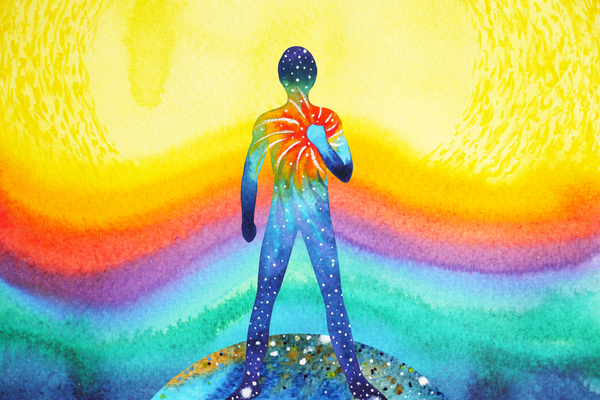Color therapy is simple in concept, can be free, and could be life-changing. “In our culture, we already equate colors to how we feel, and that’s why color therapy connects people to their emotions,” Constance Hart, color therapy expert and founder of Conscious Colors, said in an interview with Real Simple magazine. “It becomes a wonderfully therapeutic way to find out where you’re at emotionally. We know obvious things like, ‘I’m angry right now,’ ‘I’m sad,’ or ‘I’m feeling really happy,’ but we have more nuances to our emotional palette as human beings. A color palette is where we can find those nuances.”
It’s also a science that, though in its infancy, is gaining a lot more traction, especially when tied to light and light therapy (which is its own type of therapeutic practice). “Color and light therapy have been used to treat a variety of conditions of both physical and mental health,” says Padma Gulur, MD, professor of anesthesiology and population health executive vice chair at Duke University. “Bright light therapy is used in mood and emotional disorders, such as depression, and green light has been shown to decrease the severity of migraines.” And blue-light blocking lenses count as color therapy, too. “Blue light filters are also commonly recommended for people who look at computer screens for extended periods of time to avoid headaches, dry eyes,” Dr. Gulur says.
“According to ancient Egyptian mythology, the art of chromotherapy was discovered by the god Thoth. In the hermetic traditions, the ancient Egyptians and Greeks used colored minerals, stones, crystals, salves, and dyes as remedies and painted treatment sanctuaries in various shades of colors,” the authors wrote. “In ancient Greece, the physical nature of color was dominant. Color was intrinsic to healing, which involved restoring balance. Garments, oils, plasters, ointments, and salves were used to treat disease. The Greeks were unaware of biological changes in the body as a result of color treatment; nevertheless, they had blind faith in the healing properties of colors.”
The American Disabilities Community importantly notes that while color therapy is not quite scientifically proven to help remedy many diseases and disorders. It’s also been reported to help with a number of things, like “positively impact academic performance” and assist with “aggressive/hostile behavior.” It could also reduce the symptoms of attention-deficit hyperactivity disorder (ADHD), dyslexia and learning disabilities. It notes it could even help physical ailments like epilepsy, insomnia, migraine, and vision disorders. According to certified color therapist and certified color time consultant Walaa, the benefits could be even more profound. In an interview with Real Simple, Walaa says, “Color therapy can really help you dive in and go to these deep places inside of you that you were usually afraid of going to, like the emotional blocks and traumatic spots.”
How? Because, as Walaa explains, color doesn’t technically exist. It is merely our brains translating light waves of varying lengths and frequencies. “These light waves also have corresponding thoughts, corresponding feelings, and corresponding numbers. They all vibrate in a different bandwidth,” she says. “Whenever you’re attracted to a color or working with a color, it’s your subconscious mind that is actually attracted to it.” In other words, your brain is organically reacting to the colors it senses.
If you’re currently seeing a physician or mental health provider, it’s always a good idea to speak with them about your current treatments and potential treatment options. Next try reaching out to experts who offer color readings, one-on-one coaching, group workshops and more. But, as Hart explains, you don’t have to do (or spend) much. In fact, you could dip your toes into the practice of color therapy just by looking outside. “You can find it in your own environment and for free,” she says. “I’m looking out the window at my beautiful garden, and I’ve got pink and magenta and yellow and green and blue pots and violet. Basically, I’ve set up a whole rainbow of opportunities there.”
Hart says you can also begin by gathering objects in your environment and sitting in front of them to see which colors spark emotion. Next, those interested in color therapy can try arranging their closet or bookshelves by color. “Once something is arranged by color, then there’s a deeper opportunity to see which colors are an attractor and which colors you feel repelled by,” she adds. “This is an opening way to start discovering the color therapy process, which is mainly around connecting our emotions with colors and discovering which colors help us in a time of need, either emotional or physical needs.”
The best use for color therapy, both experts say, is as a tool for emotional wellness. All you need to do is open your mind and your eyes. “Color,” Walaa says, “can transform our lives and help us live a life with meaning.”
—
Photo Credit: Benjavisa Ruangvaree Art / Shutterstock.com
